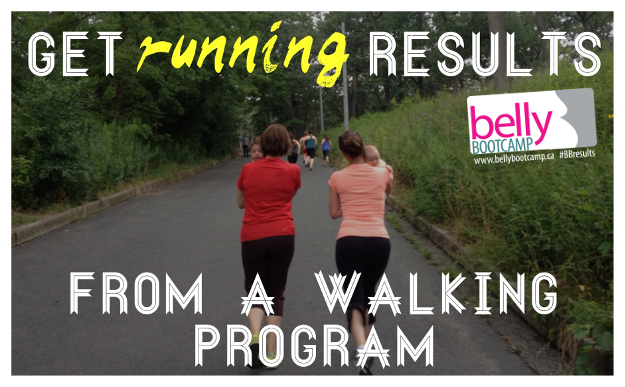
walking-hiit
So you don’t like running. Or you’re pregnant or have just had a baby and your pelvic floor isn’t quite up to pounding the pavement anymore. Can walking help you get fit and keep you healthy? What sort of walking is best? How long do you have to walk to stay lean and keep your heart healthy?
Pregnancy and postpartum are a time that most of us lay off on high-impact activities like running. But even those us who are past the immediate postpartum stage might find that running just doesn’t feel “right” the older we get.
We hear often from our Belly Bootcamp mamas that knee injuries keep them from running. It’s not our imagination; women experience knee injuries more frequently than men due to differences in our musculature as well as our nervous system. Walking can usually be tolerated by sore joints or vulnerable tissues like the pelvic floor, at almost any stage of life. In fact, it’s a cornerstone of our recommendations for exercise after baby, and throughout pregnancy.
IS RUNNING SUPERIOR TO WALKING?
In some ways, maybe, and for some people. There is a reason that the top runners of the world, and many of the people you see zipping around you in the park, are lean. Running contributes more quickly to fat loss than walking does, because running burns more calories per minute.
Running also seems to have an appetite-suppressing effect that walking doesn’t have. Not everything is cause and effect, of course. There is also the chance that runners tend to be lean because the type of person who runs regularly is also likely to be the type of person who eats healthfully.
Remember, as gym rats love to say, “Abs are made in the kitchen.” To lose weight, you can engage in lower impact exercise such as walking and control your food intake by eliminating foods you know are too easy to overeat, and foods you know to be unhealthy in general — sugar, white starches, alcohol and processed foots. Running does not guarantee leanness. There are plenty of runners who overeat and stay far from lean. Sometimes long distance running is even known to cause overeating, as people feel they must compensate for their caloric burn by eating extra carbohydrates before or after runs. There are also plenty of lean people who do very little cardio at all. Bodybuilders, for example. Crossfitters. Sprinters.
HOW TO WALK LIKE A BADASS.
Aside from body fat, it appears walking may be just as health-boosting as running. A recent study shows that the health benefits of walking are not “significantly different” from running. Like running, walking for exercise significantly reduces your risk of heart disease, high blood pressure and even diabetes, as long as the caloric burn is the same. Great news — and a great point…
To reap the health benefits of higher intensity exercise, your lower intensity exercise must last longer. So, run 20-30 minutes several days per week, if you like, and burn about 200-300 calories per workout. If you prefer to walk, you must walk about 40-60 minutes several days per week in order to achieve the same health benefits and burn about 200-300 calories per workout.
Here’s a trick that male bodybuilders have known forever (running is not just tough when you are overweight with fat, it’s also tough when you are overweight with muscle). A great way to achieve the health benefits of running is to walk up an incline. Find a hilly area in your neighbourhood or set the treadmill to a “random” setting, and increase your exertion level to a pace that allows you to speak but forces you to focus primarily on the task of walking.
Try this treadmill walking interval workout to reap the fat loss benefits of running without the impact!
To get the fat loss benefits of running without spending over an hour per day on your workout, simply use incline/hills to raise the intensity without raising the impact on your joints. A 160-pound person will burn 145 calories walking on the treadmill at 4.0 miles per hour (mph) in 30 minutes. But raise the incline to 5% and she will burn 243 calories in 30 minutes, about the same as a jogger.
BAM!
One last thought to leave with you walkers. Walking — in particular, incline walking — activates and tones all of the muscles of the legs, butt & even the abs. Walking with proper posture while engaging your core and breathing deeply can help to re-align your spine and pelvis in pregnancy and postpartum, improve mental & physical well-being, and keep you moving pain-free.
Swing your arms at right angles, keep your chest lifted, squeeze your butt so your low back doesn’t sway, and think of breathing deeply through your abdomen (rather than quickly and shallowly through your shoulders & chest). Aim to increase your incline as you build up your walking. In fact, walking at a significant incline recruits more muscle than jogging on flat ground!
If you’re aiming for a cardiovascular training and/or fat burning effect, remember this rule of thumb: The lower the incline, the longer your workout should be. The higher the incline, the shorter your workout can be. The bottom line is, you should be spent by the end of it. Not crawling to the shower, but relieved that it’s over (with, hopefully, just a little excitement for the next session).
